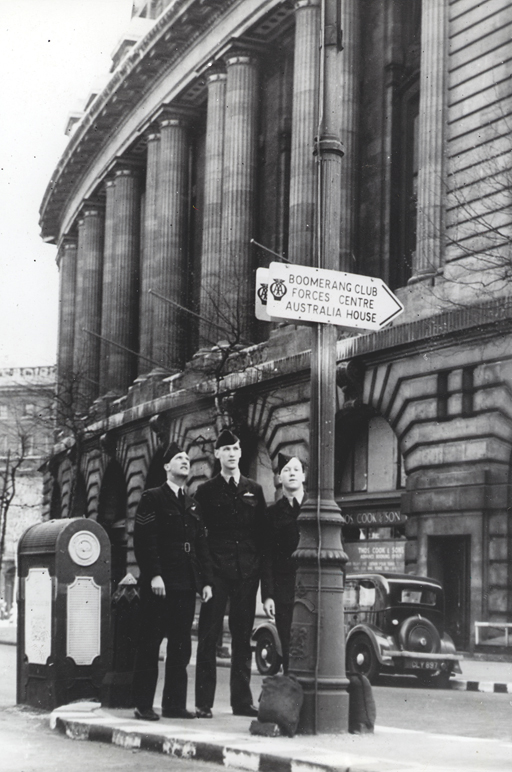In London a man on leave could take in a West End show, savour the many pubs, go sightseeing and relax at the Boomerang Club in Australia House. The club, opened in early 1942, boasted the facilities of a ‘West End hotel’ where you could snooze in an easy chair, enjoy a game of billiards, write a letter home, take in a movie, have a haircut, take a shower, and even get your uniform mended. Nearby, in Fleet Street was ‘Ye Old Codgers Inn’, once the haunt of literary types such as Charles Dickens and Oliver Goldmith; by Christmas 1943 it was being called ‘Little Australia’. In 1944, RAAF Flying Officer Cliff Halsall reported home that more than 7400 Australians had left their names and messages in the visitors’ book at Codgers. The release of a London leave was summed up by RAAF Flying Officer Alan Forrester, who spent some days there celebrating a crew mate’s 21st birthday:
We went to the Codger’s Club, Dirty Dicks, got hopelessly drunk and pinched or took control of (not stealing) a double-decker bus in Fleet Street and driving to the Strand Palace Hotel in the Strand. Collecting fares for money to spend on booze, collecting clothing coupons in payment of fares, even to the extent of a bowler hat and then setting off to the Watney Brewery to rescue two of the crew who had managed to get themselves locked in there all night. What a life! I must and always will say the British people were wonderful and very understanding.40

Australian airmen in the Aldwych, London, outside Australia House, view the sign to the Boomerang Club, c. 1942. The club opened in March 1942 and catered for Australian service personnel from all three services visiting London. The BBC made weekly broadcasts to Australia from the club featuring ‘personal messages to relatives’ from servicemen, and those in Australia eager to hear the voice of a loved one far away were alerted by weekly radio timetables in newspapers to when such broadcasts were to be made. These broadcast always rounded up with a special signature tune featuring a final ‘Boomerang’ refrain, written by famous British bandleader Jack Payne. Newspapers also sometimes printed the names of those who had visited the club at a particular time, so on 12 May 1942 The West Australian let its readers know that Pilot Officer RR Oldham of Perth, Pilot Officer SE Thomson of Wyalkachem, and Aircraftman Hansen were ‘all well’, had spent half of their leave in Scotland and had been to the Boomerang Club. [‘London Gossip’, The West Australian, 12 May 1942; ‘Boomerang’, The Horsham Times, 17 July 1942; State Library of Victoria, H99.205/804, an015703]

Some of the first RAAF Empire Air Training Scheme graduates to arrive in the United Kingdom take a look around Trafalgar Square in London, c. December 1940. London was a magnet for men of the RAAF on leave throughout their time in the United Kingdom, as most had grown up in Australia hearing about the famous sights of this capital city of the Empire. Cliff Halsall, who flew with No. 460 Squadron RAAF, visited London and saw ‘St Pauls … St Clement’s Danes – Trafalgar Square – Wimpole Street – the Discovery – Covent Garden – Temple – Strand – Saville Row – Fleet Street – the Embankment – the cabbies – the police’. [Cliff Halsall, in Hank Nelson, Chased by the sun, ABC Books, Sydney, 2002, p. 69; State Library of Victoria image H98.100/4218, an000276, Argus newspaper collection]